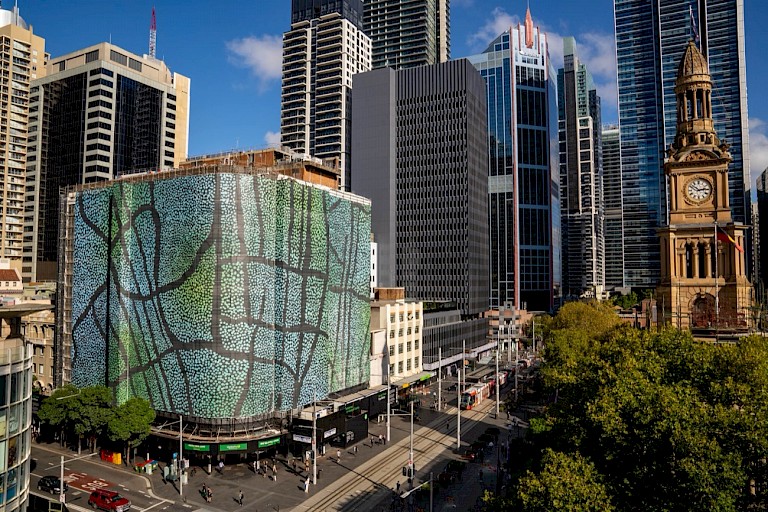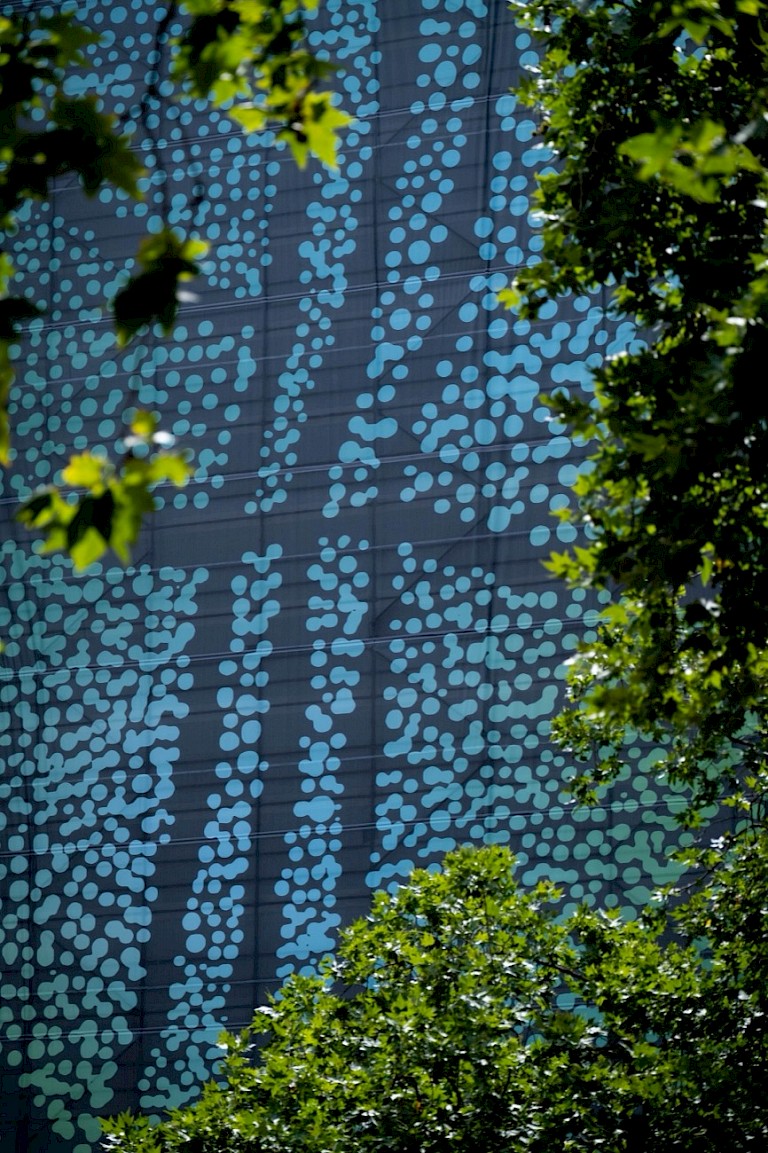



The Artist
Designer Toby Bishop grew up on the south coast of New South Wales, Australia, and is a member of the Kungarakan clan, custodians of the Finniss River in the Fitzmaurice Region of the Northern Territory.Toby has worked as a graphic designer since graduating from university in 2017 and in 2019. His work as a creative thinker and practitioner was inspired early on by his nana (wetji), an artist and linguist who worked to record and revive the language of their clan. Her guidance and inspiration have encouraged Toby to explore the intricate connections to Country and the ways indigenous stories can be told through visual languages and design.Toby has worked on projects throughout Australia, engaging with Aboriginal communities, and working with artists and knowledge holders to create site-specific public installations that have significant impact to the areas, both culturally and aesthetically. He sees his work as helping to bring the spirit of the site back to the place through ancient stories.
Ancient Tracks was chosen from a competition responding to a brief from the City of Sydney, which called designers, photographers, and artists to envision a “green” vision for the city. Toby Bishop’s design was chosen from 1800 entries, and it is notable that the City selected a design from a contemporary Indigenous artist, underpinned by a holistic connection between the environment and ancient Indigenous peoples. This choice of work challenges definitions of Sydney as a modern Western-based metropolis as well as “green” considerations as a recent phenomenon.In terms of logistics, the design was printed on a large-scale building wrap produced by Mesh Direct, an Australian company specializing in grand format printing. In order to replicate the original artwork on such a large scale, the wrap was broken down into eight huge 180kg panels for the installation process and to fit the scaffold. Mesh Direct is advertised as a 100% carbon neutral business, and as director Andrew Doenicke, commented:”This was a fantastic opportunity to align our own desire for a greener city with the values bound within Toby’s incredible artwork.”
Toby Bishop intended his spectacular work Ancient Tracks, strategically positioned on a busy intersection in Sydney’s central business district, to pay homage to “Indigenous navigation and land management practices on Gadigal country” (Sydney). There is an abiding message here in terms of how the social sphere represents a highly complex, interrelated set of environmental, political, and cultural imperatives and conditions as well as how art in public spaces can be used as a vehicle for expressing and representing these complexities. As a temporary intervention, Ancient Tracks adds to a dynamic interpretation of contemporary Sydney as a multi-layered and diverse cultural space with an ancient and enduring past that has tended to remain hidden beneath exclusionary structures of postcolonial power.The Greater Sydney region is home to the largest population of indigenous Australians, with over 70,000 individuals identifying as Aboriginals or Torres Strait Islanders. Through its public art programme and the establishment of Aboriginal and Torres Strait Advisory Panel in 2008, the City of Sydney has shown a commitment to creating structures for reinforcing and recognising the dynamic legacy of Aboriginal visual cultures in the public realm and social sphere. Sydney’s City Centre Public Art Plan is designed to contribute to and reinvigorate the city’s social fabric through commissioning public art in urban spaces. Ancient Tracks was located on one of Sydney’s main thoroughfares – George Street – which is a particular focal point for the City’s integrated approach to public art and urban design. Ancient Tracks was located on one of Sydney’s main thoroughfares – George Street – which is a particular focal point for the City’s integrated approach to public art and urban design. In this context, Toby Bishop’s work was a high-profile contribution to the programme of temporary works of public art, designed to complement permanent public artwork commissions. Its spectacular scale and eye-catching design were testament to the ambitions of the City of Sydney’s plan to enhance the profile of emerging and established local artists as well as commissioning work by significant international artists.Part of the City of Sydney’s intention is to transform the city through public art and place-making that provides an opportunity to make the city more legible and easier to navigate. Ancient Tracks was a particularly good choice in this regard since it added cultural layers to the everyday experience of contemporary Sydney by highlighting and reclaiming pre-settlement navigational precedents and customs that precede and establish the current built environment. It also offered an unexpected perspective on how the urban plan, along the “spine” of George Street, might be understood from the standpoint of Indigenous site lines, routes, voices, and stories.



